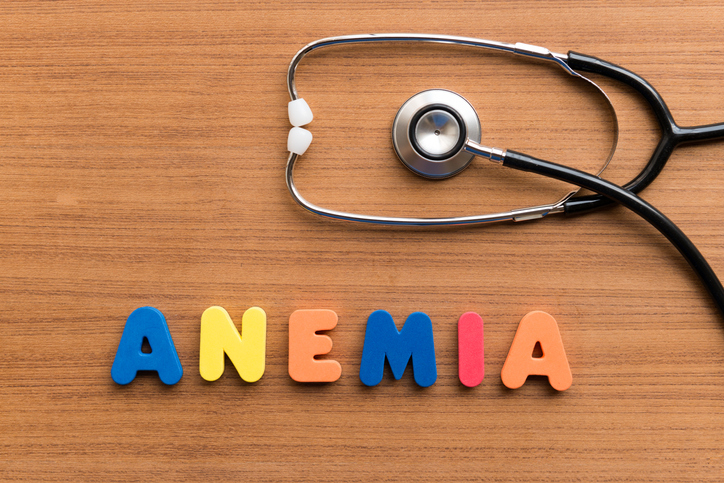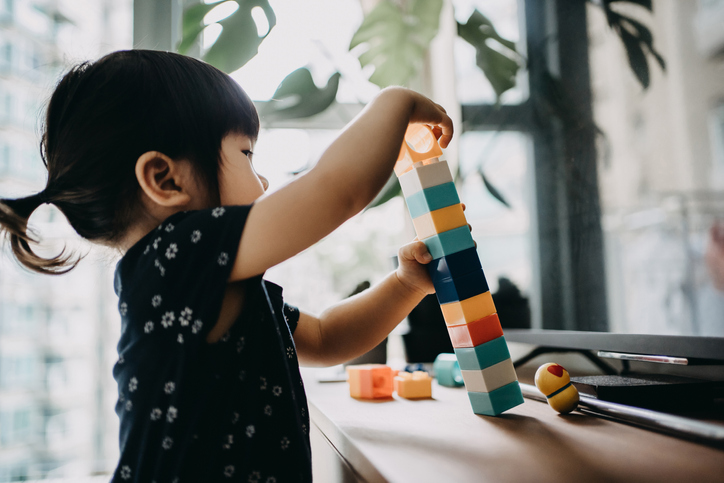Let's Be Proactive About Iron Deficiency In Our Toddlers!

Iron is a very important mineral that we all need to survive. Every single cell in our body needs it to function optimally. Specifically, we need iron to make hemoglobin (a component of our red blood cells) which delivers oxygen to all the cells in our bodies. To put our need of oxygen in perspective, we can live for weeks without food, days without water but only a few minutes without oxygen. Without enough iron, our bodies will not be abe to carry sufficient oxygen to our vital organs and this may cause us to feel tired.
I previously discussed the importance of iron in both men and women. But we also have to focus on the necessity of adequate iron in the bodies of our toddlers (many of whom are home with us being homeschooled due to COVID-19).
According to the World Health Organization (WHO), iron deficiency in children under the age of two “can have significant and irreversible effects on brain development" and may "lead to negative consequences on learning and school performance later in life.”

Iron plays a role in the synthesis of neurotransmitters. Think of neurotransmitters as the brain’s communication tool. Without them, your brain wouldn’t be able to tell the heart to beat, your stomach to digest food or your lungs to expand and contract. Neurotransmitters are also responsible for telling your brain to release the proper amounts of serotonin, dopamine, norepinephrine and all the other mood balancing chemicals that are vital to providing the body balance.
Studies with rodents suggest that iron deficiency impacts “brain cell metabolism and morphology.”
(Children who are deficient in iron are also at a higher risk of developing infections, according to the Cleveland Clinic).
“Anemia is a common health problem in children. The most common cause of anemia is not getting enough iron. A child who is anemic does not have enough red blood cells or enough hemoglobin. Hemoglobin is a protein that lets red blood cells carry oxygen to other cells in the body. Iron is needed to form hemoglobin,” reports Cedars Sinai.
According to the American Academy of Pediatrics (AAP), iron-deficiency anemia is the most common nutritional deficiency worldwide. In the United States, this deficiency is most common in women and young children (affecting 2.4 million U.S. children).
First, a healthy pregnancy is key. Full-term babies who are born to healthy mothers (who are not iron deficient) get iron from their mothers during the last three months of pregnancy. So if a pregnant woman is iron deficient, she could pass this deficiency to her baby. And if a baby is born premature, this baby could also be iron deficient.
Breast Milk does not have a lot of iron.
Breastfeeding your baby is great for your baby’s health and development, but breast milk does not contain a lot of iron.
The American Academy of Pediatrics (AAP) recommends that at four months of age (most newborns have enough iron stored in their bodies for at least the first 4 months of life), a baby who is breastfed or partially breastfed be given a daily iron supplement until that baby is old enough to start eating whole foods rich in iron.
If an infant is fed iron-fortified formula, then this infant will most likely not need iron supplementation. But this does not mean that formula feeding is a better option. Breast milk is ideal in the first 6 months of life, but you will have to supplement.
The AAP also advises that your baby undergo a hemoglobin blood test at 12 months of age to determine if the baby has an iron deficiency.
Introducing good nutrition early on is key.
Every baby or toddler is different, and, as always, it is best to seek the advice of a competent healthcare professional, but you want to get your baby on the healthy eating bandwagon as soon as possible.
I know it’s hard because babies can be picky, fussy eaters, but the Centers for Disease Control and Prevention (CDC) reports that at six months of age, you can start introducing iron-rich foods and iron-fortified cereals. And toddlers between the ages of one to three years should have iron-rich foods.
Foods rich in iron.
There are two forms of iron in food: heme and non-heme. Heme iron is absorbed two to three times more efficiently than non-heme. Heme iron foods include meat, fish and poultry.
According to one source, you absorb up to 30 percent of the heme iron you consume.
But, of course, not everyone eats meat and seafood.
“Non-heme iron is found in plant-based foods such as fruits, vegetables and nuts. Foods with non-heme iron are still an important part of a nutritious, well-balanced diet, but the iron contained in these foods won’t be absorbed as completely. You absorb between two and 10 percent of the non-heme iron that you consume.”
Spinach is a great plant-based source of iron, and cooking it makes the iron more available to your body (just do not overcook it, as this will cause the spinach to lose nutrient value).
Vitamin C is also key.
Vitamin C, another key nutrient in growing a healthy child, can also help improve absorption of iron in the body.
As your child develops and grows, be sure to include routine nutrient testing as part of a proactive healthcare regimen.
Enjoy your healthy life!
The pH professional health care team includes recognized experts from a variety of health care and related disciplines, including physicians, attorneys, nutritionists, nurses and certified fitness instructors. This team also includes the members of the pH Medical Advisory Board, which constantly monitors all pH programs, products and services. To learn more about the pH Medical Advisory Board, click here.







